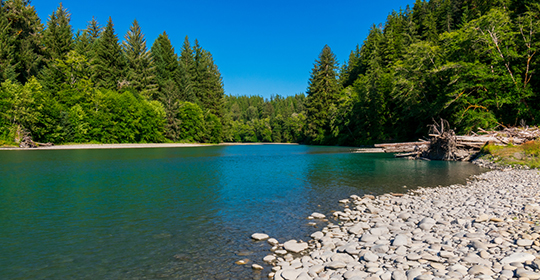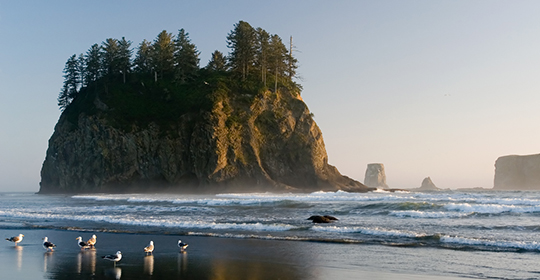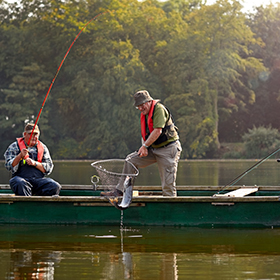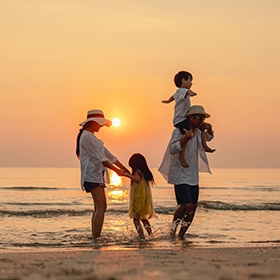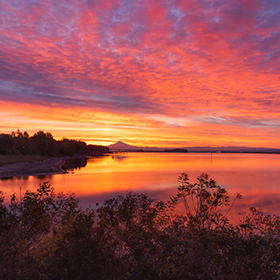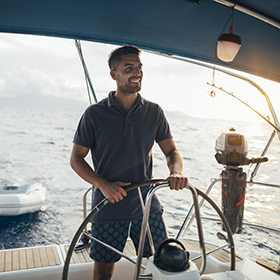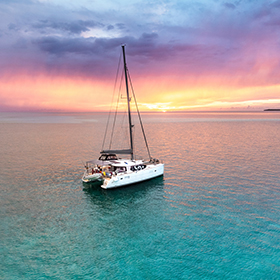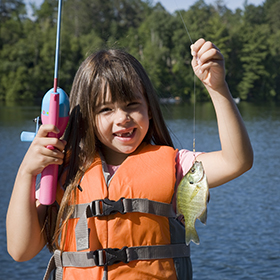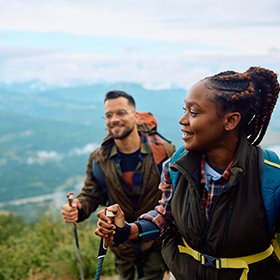Olympic National Park is dotted with lakes for boating, rivers for fishing, mountain peaks for hiking, and a rugged coastline for beachcombing.
Originally named the Olympic Forest Reserve, dating back to 1897, the magical place we now know as Olympic National Park was first established in 1938 to preserve some of Washington state's rapidly vanishing primeval forests. Olympic National Park, a UNESCO World Heritage now, is a mystical wilderness that feels a million miles from civilization but in reality, is less than a 3-hour drive from Seattle. It’s a critical portion of natural space in America because it pro-tects one of the largest remaining blocks of old-growth forest and temperate rainforest in the continental United States.
You will want to visit Hurricane Ridge, the most easily accessed mountain area in the entire park that provides staggering views that have to be seen to be believed, and to see the towering mountains with glacier-clad peaks, lush rainfor-ests, have fun beachcombing, tide pool exploration, wildlife viewing, and experience a rugged coastline unlike anything you’ve even seen. Olympic National Park also features a diverse range of ecosystems, a famous town from modern movie history, easy access by ferry to the beautiful capital of British Columbia, and both the westernmost and north-westernmost points in the lower 48 states!
The best time to visit Olympic National Park is during the summer months and you’ll need at least three full days in Olympic National Park, if you want to visit Ruby beach renowned for its abundance of polished jasper gemstones, Lake Crescent, renowned for its crystal-clear waters and abundant rainbow trout, and if you want to kayak and fish in this vast wilderness. And you do because this lush, green, thriving peninsula is a natural wonderland!
Cape Alava, the westernmost point in the contiguous United States, and Cape Flattery, the northwesternmost point, are both on the peninsula and are worth a visit too, for more than just Jeopardy-worthy trivia. The rugged coastline in those spots is strewn with fallen timber, massive rocks, and feels otherworldly. There are great photo opportunities in this remote wilderness.
The Best Activities in and around Olympic National Park
1. Hiking
Olympic National Park offers a diverse range of hiking trails, through scenic rainforests and up to alpine peaks. There are loop trails and out-and-back treks suitable for all ability levels. Hiking in Olympic National Park is best in the spring and summer when the weather is drier and more predictable. No matter when you plan on hiking in the park though, you’ll want to bring a rain jacket because the mossy and magnificent Hoh rainforest receives 150 inches of rainfall annually! This is considered to be one of the wettest areas in the entire U.S.
2. Fishing
You can fish in National Parks, and Olympic National Park is no different! Eleven major river systems drain from the Olympic Mountains, offering some of the best habitat for fish species in the country in 800 lakes and 4,000 miles of rivers and streams that support some of the Pacific Northwest’s most extensive runs of wild salmon, trout, and char. There’s a diverse range of fishing opportunities in Olympic National Park, including Lake Crescent which is famously renowned for its crystal-clear waters and abundant rainbow trout. Fly fishing is very popular in the park, but keep in mind that as of November 2023, three rivers are closed to protect declining populations of wild steelhead which were recently petitioned for listing under the Endangered Species Act.
3. Pop Culture Exploration
Olympic is a natural paradise, but there’s more than just moss and mountains here! If you or your kids love the Twilight books and movies, you’ll be excited to learn that the town of Forks is found near Olympic National Park on the peninsula. Sink your fangs into your pop culture fandom by walking around and taking pictures in the place where cinematic vampires once roamed.
4. Beachcoming
Olympic National Park is known for its stunning beaches! Rialto Beach features a fascinating collection of rock formations and Ruby Beach is renowned for its abundance of polished jasper gemstones. This means that it is prime beachcombing territory along a whopping and wild 62 miles of rugged coastline. This is the longest undeveloped coast in the continental United States and is chockfull of native and endemic animal and plant species. Spending an afternoon beachcombing in Olympic National Park is a rewarding all-ages activity you’ll never forget!
5. Kayaking and Other Water Sports
There are boat tours, rafting trips, and even surfing on offer in Olympic National Park, but the park’s serene lakes are best loved for paddling on the water. Lake Crescent is a clear glacial lake ideal for a day paddle on a rented kayak, canoe, rowboat, or paddleboard. Meanwhile, you can rent a boat to paddle in the shadow of forested peaks on Lake Quinault. If you crave salt water, there’s the Strait of Juan de Fuca, a sheltered and salty waterway perfect for paddling among sea stars and seals. Check out more of the best lakes for boating in the U.S.
Where Can I Stay in Olympic National Park?
While the park is remote and still mostly made up of untamed wilderness, there are numerous places to stay in Olympic National Park, including lodges, hot springs resorts, chain hotels, and campgrounds with cabins and tent sites. Seven campgrounds in Olympic National Park accept reservations for the busy summer months, from late April through September. Another seven campsites are booked in person only and on a first-come, first-served process. If you are looking to camp inside the park, know that only one site (Log Cabin Resort RV and Campground) has showers and laundry, and only two (Log Cabin and Sol Due Hot Springs Resort RV Park) have water and electrical hookups. Before you go camping in Olympic National Park, consult our spring camping checklist to make sure you pack everything you need for a memorable, safe, and fun time in the PacNW wilderness!
Looking for more outdoor adventures this year? Check out the 8 best National Parks to visit during the summer.

